
South Australian Medical Heritage Society Inc
Website for the Virtual Museum
Home
Coming meetings
Past meetings
About the Society
Main Galleries
Medicine
Surgery
Anaesthesia
X-rays
Hospitals,other organisations
Individuals of note
Small Galleries
Ethnic medicine
- Aboriginal
- Chinese
- Mediterran
Port Augusta Hospital and its surgical instruments
Acknowledgments: We are grateful to Ros McRae the CEO, Mrs Betty Burch, a former director of nursing, Ms. Joylene Noll administrative officer (nursing) and Mrs Mini Reynolds unit manager of theatres for valuable advice, allowing us to photograph the instruments and giving us their catalogue.
The site of Port Augusta was discovered by Matthew Flinders in 1802 and the town was established in 1854. Its current population nears 15,000 and the hospital has a catchment area of 31,000.
The first Port Augusta hospital was opened in 1875 and its first patient, Mr James Osborne, was admitted on March 10th. It was built in the colonial style and augmented the existing casualty hospital. It had 3 wards and later additions were an isolation ward, operation room, maternity ward, and accommodation for nursing and ancillary staff. By 1921 the hospital board reported a daily average of 21 patients, and yearly admissions totalled 493.

The original hospital has undergone numerous changes and additions and was eventually replaced in 1975 by a four-story building with four general wards, two operating theatres and several specialty wards for obstetric and paediatric patients. It was fondly called the “Stack”. The current hospital was commissioned in 1997 and caters for all medical and surgical specialties including renal dialysis. It also serves as the base hospital for the Royal Flying Doctor Service.

The buildings of the old Port Augusta Hospital, photographed from the adjoining paddock.
During the hospital’s development it has been staffed by many medical practitioners, and the equipment has developed and changed with the times. Numerous old instruments and board minutes have been saved and form part of the Port Augusta collection They include a chloroform anaesthetic kit, early amputation instruments, tracheostomy tubes used in the 1941 diphtheria epidemic and a device designed by Dr, Thompson to retrieve swallowed coins from children.

Replacement tracheostomy and obturator (above) used to change tracheostomies.
Mostly used in the diphtheria epidemic of 1941
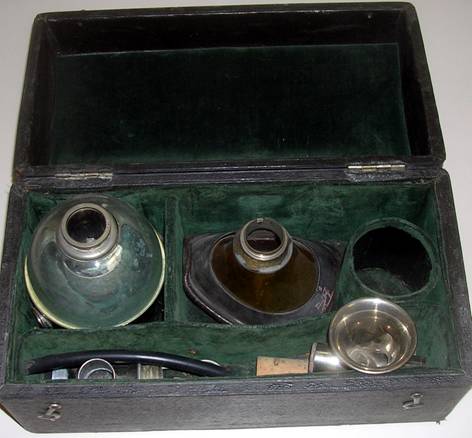 Chloroform administration kit in its box
Chloroform administration kit in its box

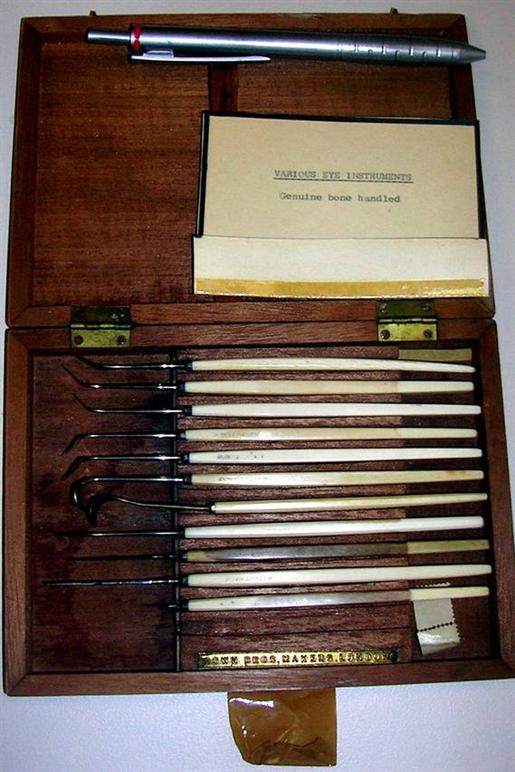 Surgical ophthalmic instruments with bone handles used for the removal of foreign bodies lodged in the cornea.
Surgical ophthalmic instruments with bone handles used for the removal of foreign bodies lodged in the cornea.
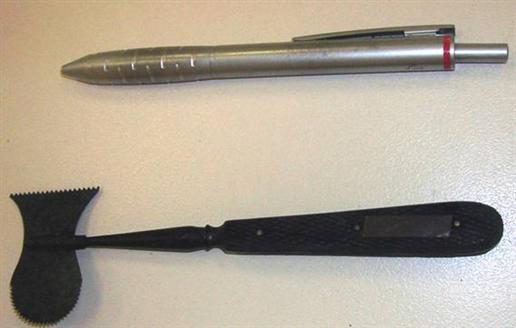 Small saw, with enlarged view below.
Small saw, with enlarged view below.
Most likely used by ENT surgeons during mastoidectomy.

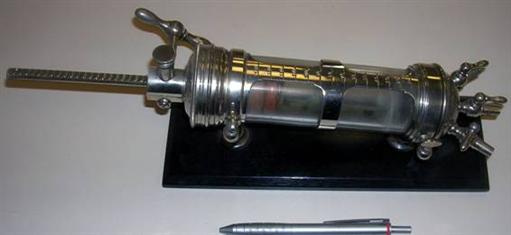 This syringe has 3 taps to allow injection of a predetermined volume of air into the pleural cavity during introduction of a pneumo-thorax to treat tuberculosis. The plunger is driven by a rack and pinion turned by the handle.
This syringe has 3 taps to allow injection of a predetermined volume of air into the pleural cavity during introduction of a pneumo-thorax to treat tuberculosis. The plunger is driven by a rack and pinion turned by the handle.
 A device designed by Dr. John Thompson and made in Port Augusta. It was used to retrieve swallowed coins from children’s gullets. It was 50 inches long.
A device designed by Dr. John Thompson and made in Port Augusta. It was used to retrieve swallowed coins from children’s gullets. It was 50 inches long.

Enlarged view of the coin remover head. Once passed beyond the coin the head snared the coin which was then retrieved.
 A suction device. It was attached to a standard tap. Based on the Venturi principle, the running water produced a negative pressure.
A suction device. It was attached to a standard tap. Based on the Venturi principle, the running water produced a negative pressure.
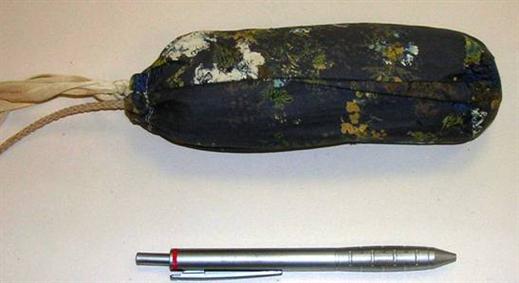 A cloth bag containing lead shot used to provide traction to stabilise fractures.
A cloth bag containing lead shot used to provide traction to stabilise fractures.
 Two douche cannulas.
Two douche cannulas.

Early sphygmo-manometer, showing cuff, tubing, and mercury manometer
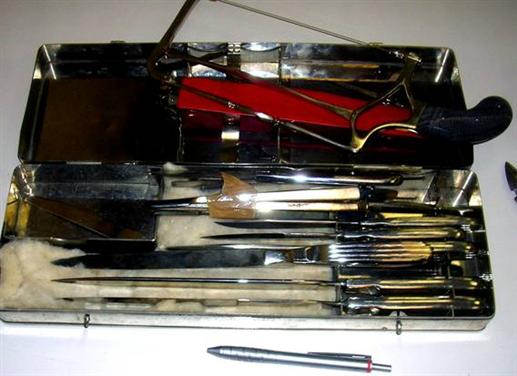
Boxed set of amputation knives, and bone hack saw.
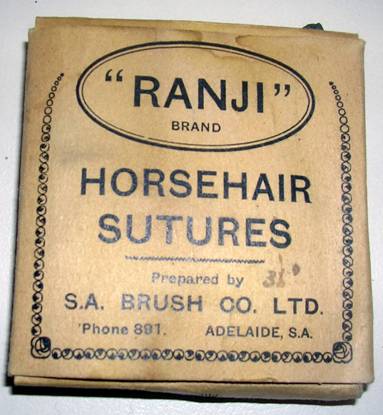
Horse hair sutures produced in S.A.
 “Sparklet” type miniature cylinders used to provide oxygen in emergencies.
“Sparklet” type miniature cylinders used to provide oxygen in emergencies.
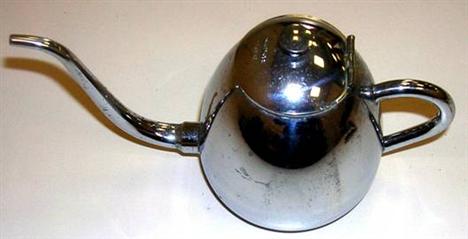
Stainless steel tea pot used for irrigation
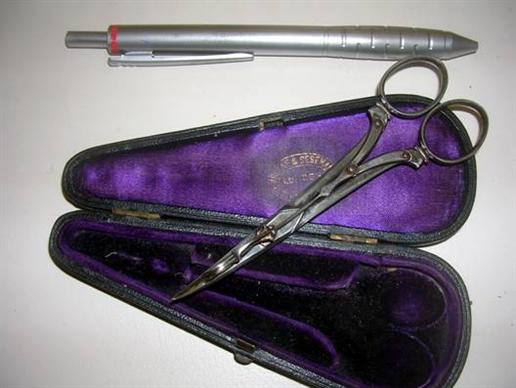
Specialised double action scissors
 Enlarged view the of point of the scissors showing additional lever to prevent further penetration.
Enlarged view the of point of the scissors showing additional lever to prevent further penetration.
-o0o-